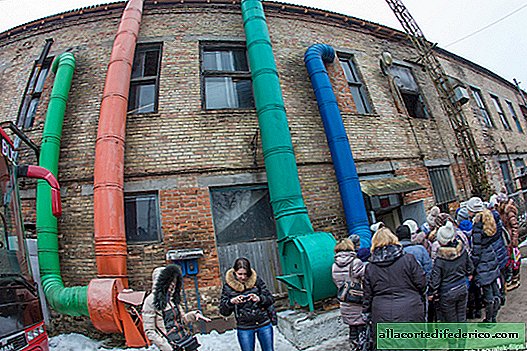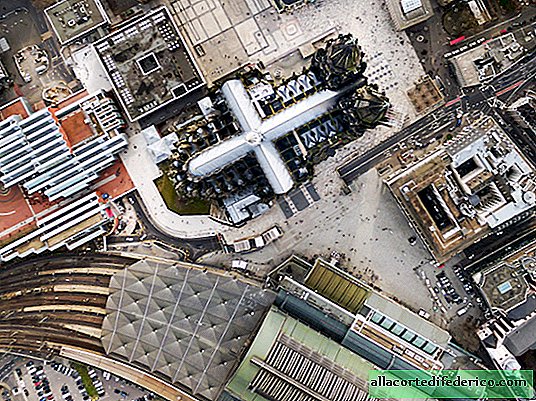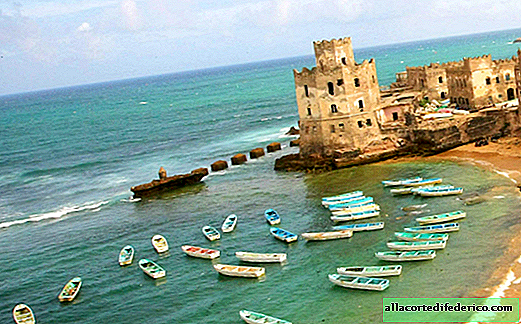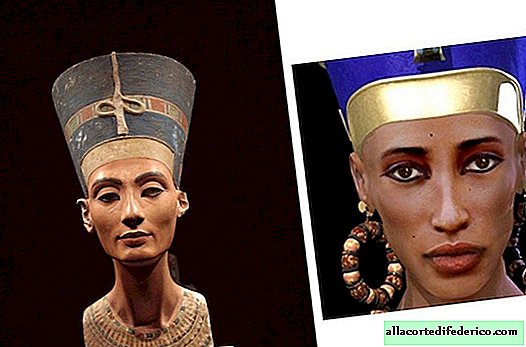The underwater city of Nan Madol - the oldest civilization of the planet on the islands of the Pacific Ocean
In the Pacific Ocean, in the region of Micronesia, the mysterious Nan Madol complex is located, the origin of which is still shrouded in mystery. Scientists cannot determine who created it and in what era these builders lived.

Nan Madol is the ruins of ancient structures, most of which are under water. This ancient archipelago, part of the Caroline Islands, is located on an area of 79 hectares and occupies 92 islands.

For a long time, it was believed that Nan-Madol is an artificial archipelago that arose in the XIII - XV centuries. At this time, the Micronesians lived here under the rule of the Saudeler dynasty (So Deler). It was they who built this complex from basalt blocks, first laying the foundations in shallow lagoons, and then erecting the rest of the buildings. Basically, these were temple complexes, palaces and public buildings, built of very durable material - basalt. Basalt monoliths stacked on top of each other in the form of woodpile, the base of which were parts of a coral reef. And under the water were the lower parts of the buildings and the transitions between the temples. Because of this, an unusual complex of basalt structures even got the name "Pacific Venice". Historians have suggested that the Saudeler dynasty, which built all these buildings, disappeared around 1500 as a result of the onslaught of the conquerors or during internal conflicts.

But over time, many scientists began to doubt the credibility of this version. At the beginning of the XX century, New Zealand archaeologist John Brown began to calculate the labor costs necessary to build such a city. It turned out that at least 10 thousand people were required by the workers alone, and they had to deal exclusively with construction. Indeed, for the construction of Nan Madol, basalt blocks up to five meters long and weighing more than 5 tons were used. One of the corner stones of the foundation, according to experts, weighs 50 tons. In addition, there are no such basalt deposits for building materials on the islands themselves, therefore, they had to be somehow brought here from remote islands. In addition to the workers themselves, there should have been other residents of the city who would take care of food. According to researchers, however, in this part of the Caroline Islands there are not enough food resources to ensure the livelihoods of such a large number of workers.

And the fact of the construction of such serious structures by the Polynesians raises serious doubts. In these places, people still live in much the same way as their ancestors, who were discovered here by the Spanish discoverers in 1529. And the construction of such cities, as history shows, is only possible for highly developed civilizations. The society involved in gathering and hunting does not build such complexes, which require knowledge in mathematics, physics and perfect tools.

But recently, new facts have appeared in the history of Nan Madol. It turned out that most of the complex is hidden under water. At a depth of up to 60 meters, houses and streets lined with basalt megaliths, columns and temple structures are located. Scientists realized that Nan Madol is actually not an artificial archipelago, but a flooded ancient city that stood on the ground. And judging by the latest data on changes in sea level, it was flooded about 12,000 years ago, after the end of the last ice age. With the onset of the warming era, ice caps began to melt and the ocean level gradually rose, hiding the temples and streets of the ancient city under water. According to another version, the ancient city could be destroyed by powerful tsunamis, which today are not uncommon in this part of the planet.

It is also noteworthy that Nan Madol is far from the only unusual structure on the Caroline archipelago. On the islands of Babeldaob and Kosrae, the ruins of ancient megalithic buildings were found. And on the island of Yap, you can find even more unusual traces of ancient civilization. The whole island is strewn with strange formations called "Paradise stones." These are round stone disks with a hole in the middle. It is interesting that local residents use them as means of payment, and their name is appropriate - "stone money". After the transaction, the transfer of such a “coin” is not required, and the contract is concluded orally.

The new parts of Nan Madol discovered under water have further confused historians. What ancient civilization built such an unusual city, and what happened to it? There is no answer to these questions yet, and Nan Madol in combination with the constructions of other islands continues to be one of the greatest mysteries of history.


















